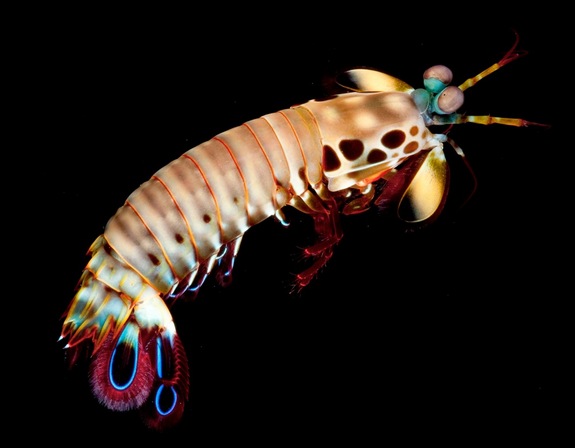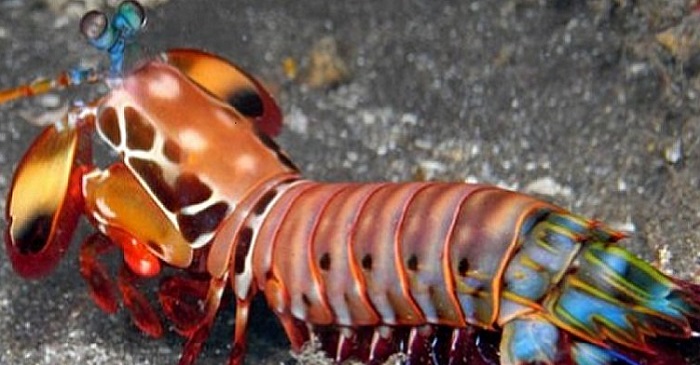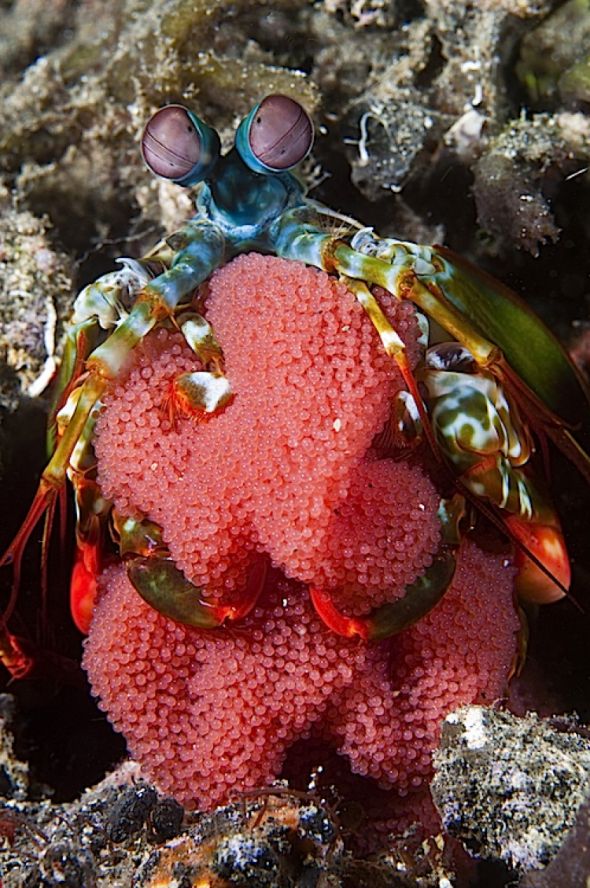Reproduction/Life History
The peacock mantis shrimp is known to have a few different
approaches to mating. Some choose multiple partners, but many
generally stay with one individual. They have a way of
reproducing that I believe you will find interesting as well as
their life span.
 The peacock
mantis shrimp generally mate all year round. They mate a couple
times throughout the year but the peak mating seasons are during
the warmer months of the year. Reproduction occurs nocturnally
(Morgan and Goy 1987, Wotham-Neal 2002). The average gestation
period for the eggs is around 40 days, but it can range anywhere
from 9 to 60 days (Chiu 2013). After the eggs hatch, the large
are planktonic, but don't let this fool you, they still have the
same vicious raptorial appendages and are still effective
predators (BBC 2010). The large that hatch first have also
been known to prey on other larvae. Once they hatch, it usually
takes about 35 to 70 days for the males and females to reach
sexual maturity.
The peacock
mantis shrimp generally mate all year round. They mate a couple
times throughout the year but the peak mating seasons are during
the warmer months of the year. Reproduction occurs nocturnally
(Morgan and Goy 1987, Wotham-Neal 2002). The average gestation
period for the eggs is around 40 days, but it can range anywhere
from 9 to 60 days (Chiu 2013). After the eggs hatch, the large
are planktonic, but don't let this fool you, they still have the
same vicious raptorial appendages and are still effective
predators (BBC 2010). The large that hatch first have also
been known to prey on other larvae. Once they hatch, it usually
takes about 35 to 70 days for the males and females to reach
sexual maturity.
The male
peacock mantis shrimp tend to more colorful than the females
which help them attract mates when it is time to reproduce. Once
a male attracts a female through courtship, the mating process
can begin. The male releases sperm through its external
copulatory organ, which is then collected by the female (Chiu
2013). Once the female collects the sperm it uses it to
fertilize the eggs it is holding inside. Sometimes the
females hold the sperm for extended periods of time before they
chose to lay the eggs. The females can hold the sperm anywhere
from a couple hours to multiple weeks (Morgan and Goy, 1987, San
Juan 1998, Wortham-Neal, 2002).
After the
eggs are fertilized, the female then brings them to a burrow for
safe development. After the male deposits his sperm with the
female he generally does not have any parental investment. They
may occasionally guard the burrows of their partner, but that is
it. While in the burrow with the eggs the females continue to
clean, and aerate the eggs. They usually do not leave the eggs
at any time and do not eat while brooding eggs.
These organisms generally have a short life span compared to humans. These little guys have been known to live up to around 20 years surprisingly. Throughout their 20 years of life, most tend to stay with one mating partner, but others have been known to be promiscuous and have multiple mating partners (Chiu 2013).
For more information on the person behind the camera who takes all the
pictures of this marvelous organims and photos of other amazing pictures
visit Matthew Oldfields photography site
here.
Next to
Interaction
Back to Home

